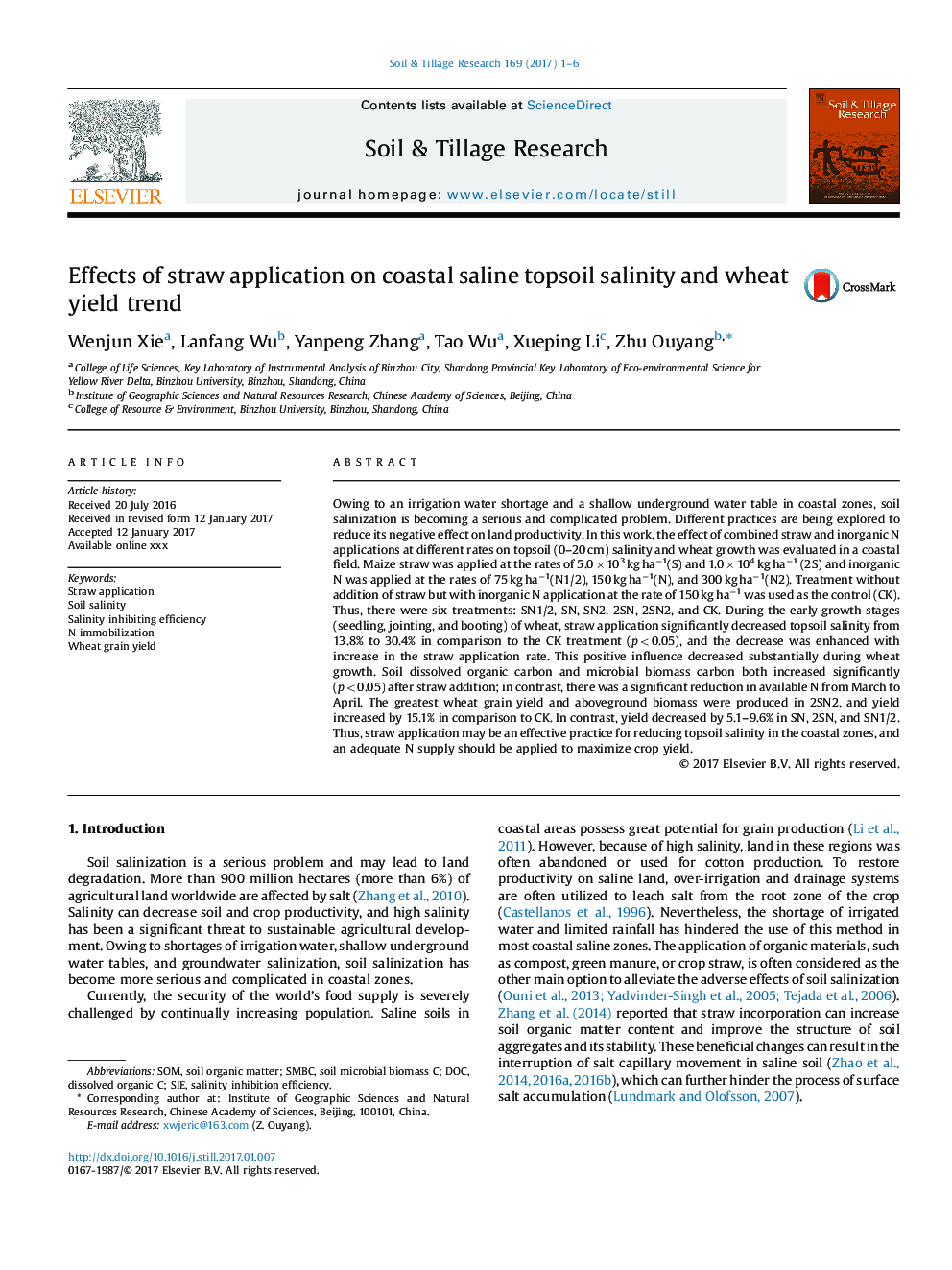| Article ID | Journal | Published Year | Pages | File Type |
|---|---|---|---|---|
| 4927568 | Soil and Tillage Research | 2017 | 6 Pages |
Abstract
Owing to an irrigation water shortage and a shallow underground water table in coastal zones, soil salinization is becoming a serious and complicated problem. Different practices are being explored to reduce its negative effect on land productivity. In this work, the effect of combined straw and inorganic N applications at different rates on topsoil (0-20 cm) salinity and wheat growth was evaluated in a coastal field. Maize straw was applied at the rates of 5.0 Ã 103 kg haâ1(S) and 1.0 Ã 104 kg haâ1 (2S) and inorganic N was applied at the rates of 75 kg haâ1(N1/2), 150 kg haâ1(N), and 300 kg haâ1(N2). Treatment without addition of straw but with inorganic N application at the rate of 150 kg haâ1 was used as the control (CK). Thus, there were six treatments: SN1/2, SN, SN2, 2SN, 2SN2, and CK. During the early growth stages (seedling, jointing, and booting) of wheat, straw application significantly decreased topsoil salinity from 13.8% to 30.4% in comparison to the CK treatment (p < 0.05), and the decrease was enhanced with increase in the straw application rate. This positive influence decreased substantially during wheat growth. Soil dissolved organic carbon and microbial biomass carbon both increased significantly (p < 0.05) after straw addition; in contrast, there was a significant reduction in available N from March to April. The greatest wheat grain yield and aboveground biomass were produced in 2SN2, and yield increased by 15.1% in comparison to CK. In contrast, yield decreased by 5.1-9.6% in SN, 2SN, and SN1/2. Thus, straw application may be an effective practice for reducing topsoil salinity in the coastal zones, and an adequate N supply should be applied to maximize crop yield.
Keywords
Related Topics
Physical Sciences and Engineering
Energy
Renewable Energy, Sustainability and the Environment
Authors
Wenjun Xie, Lanfang Wu, Yanpeng Zhang, Tao Wu, Xueping Li, Zhu Ouyang,
